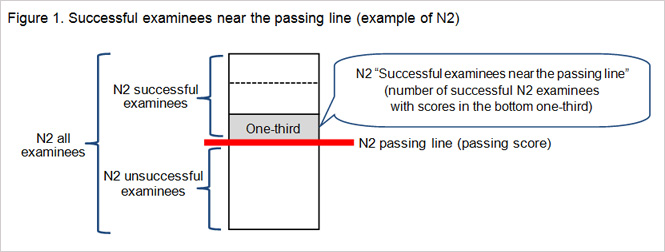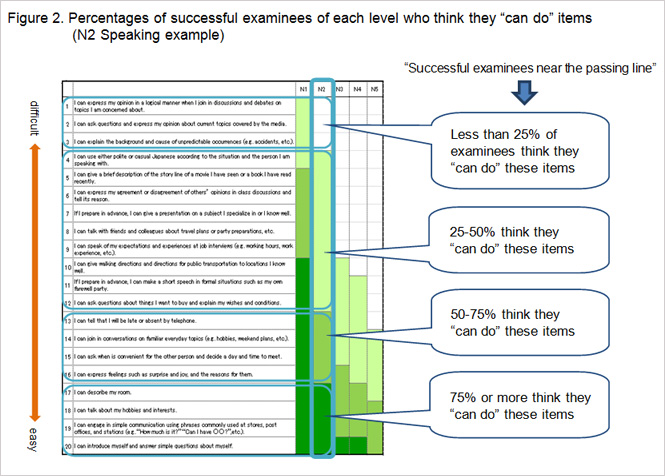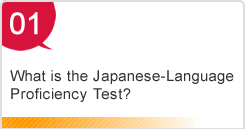1. What is the JLPT Can-do Self-Evaluation List?
The list summarizes "what successful JLPT examinees of each level think they can do in Japanese," based on self-evaluation survey results.
Therefore, it is not a syllabus (question outline) of the JLPT, nor does it guarantee the Japanese-language proficiency of successful examinees. For language proficiency measured by the JLPT and question outline, please refer to "Summary of Linguistic Competence Required for Each Level," "Sample Questions" and Section II. Test Contents of "New Japanese-Language Proficiency Test Guidebook."
The list can be used as a reference to help examinees and others get an idea of "what successful examinees of a particular level can do in Japanese."
Note: "Can-do" is shorthand for "Can-do statements," which are statements indicating what and how well students can do in a foreign language.
2. List preparation
A questionnaire survey was conducted with approximately 65,000 JLPT examinees both in and outside Japan from September 2010 to December 2011. In this study, for each of the four skill areas of Listening, Speaking, Reading and Writing, examinees were asked to review approximately 30 statements that describe activities (Can-do items, as in this Listening example:"I can understand the general content of announcements at train stations and department stores"). Examinees were asked two types of questions: ① have you ever actually experienced the situation in Japanese (experience), and ② can you do it in Japanese (self-evaluation). Question ① requires a "Yes" or "No" answer, and Question ② is answered from among four choices: "4. Yes"; "3. Yes, but with difficulty"; "2. Not very well"; and "1. No."
Results of the above questionnaire survey were statistically analyzed, and the list was prepared following the procedure below.
First, based on analysis of responses by examinees of all levels, Can-do items for each skill are arranged in order of difficulty.
Next, the percentage of examinees of each level who think they "can" manage Can-do items (namely, the percentage selecting "4. Yes") is estimated. While Japanese-language proficiency shows a significant range among successful examinees of each level, responses of only "successful examinees near the passing line" are used in analysis of the results (Figure 1). Can-do items that successful examinees near the passing line (passing score) think they "can do" should be possible for a large number of successful examinees of each level.

Finally, 20 Can-do items from each skill were selected, and percentages of successful examinees of each level who think they "can do" an item were illustrated by four graduated colors for ① 75% or higher, ② 50-75%, ③ 25-50%, and ④ less than 25% (Figure 2).
For list preparation details, please refer to "JLPT Can-do Self-Evaluation Survey Reports: Final Report."

3. List use
The JLPT Can-do Self-Evaluation List can be used for the following purposes.
Students can check their abilities against the list and set goals for future study. In addition, they can use the list to explain the level they passed to others.
Those involved in Japanese-language education can use the list to get an idea of what students who pass each level perceive their Japanese-language proficiency to be, and refer to this information when planning teaching activities.
Others involved with students can use the list to get an idea of what those who pass a particular level can handle, and refer to the information when working and dealing with students.
5. JLPT Can-do Self-Evaluation List in other languages
6. JLPT Can-do Self-Evaluation Survey Reports
The reports summarize purposes, survey methods and details as well as analysis and list preparation methods of the JLPT Can-do Self-Evaluation List. "Interim Report" published in June 2011 summarizes 2010 survey results. "Final Report"was published in October 2012.
Interim Report (published in June 2011) (Japanese)
Final Report (published in October 2012) (Japanese)
7. List FAQ

-
- *Outside Japan, the test may be held only in July or December in some cities. Click here for the test schedule in your city.
End of Text










